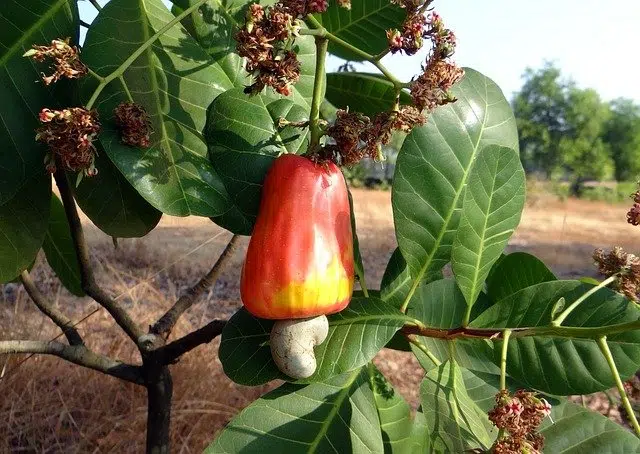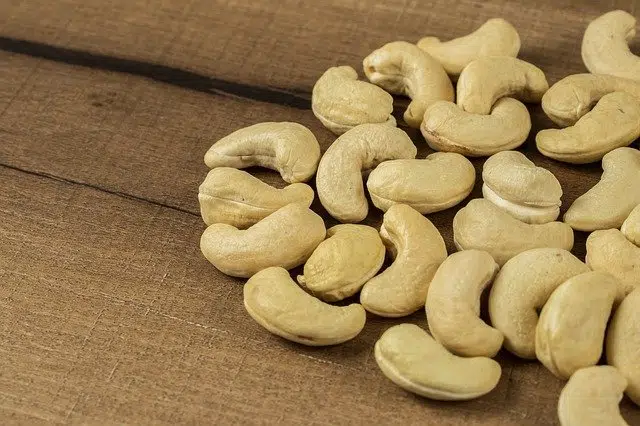
The species Anacardium occidentale is often known as cashew.
The Greek word anakárdion came into low Latin as anacardus . That is the closest etymological antecedent of cashew , a term in our language that refers to different species of tropical trees .
According to the dictionary of the Royal Spanish Academy ( RAE ), these trees share characteristics such as having edible fruit and small flowers . Furthermore, they are frequently used in medicinal matters. It is interesting to note that the fruit of these specimens is also specifically called cashew.
Anacardium occidentale
The species with the scientific name Anacardium occidentale is usually called cashew. Other colloquial names for this tree are cajú , cayú , cashew nut , Indian nut , caguil , cajuil , merey , pepa and cashew .
The French naturalist André Thevet ( 1516 – 1590 ) was the one who baptized this plant as anacardium ( cashew ) because of the shape of its fruit, similar to an upturned heart ( ana can be translated as “upwards” and cardium , as “heart”). ).
Cajú , on the other hand, is a word that comes from the Tupi languages, more precisely from acaiú or acajú , which refers to that which produces nuts. The European conquerors, upon arriving in the current territory of Brazil , were surprised by the nutritional properties presented by the fruits of this tree .
It is important to mention that the cashew is native to South and Central America. It would have been the Portuguese who, after learning about the species on the American continent, took its seeds to India , from where the expansion occurred.

Cashew seeds or nuts are consumed in different ways.
Cashew characteristics
The cashew can measure up to about ten meters in height . It has an irregular trunk, alternate leaves and yellowish or greenish flowers.
As for the fruit, we can distinguish between the seed or nut (the fruit itself) and the pseudofruit . The actual fruit, which contains the seed, looks like a kidney and stands out for its hardness .
Uses of the different parts of the tree
The parts of the cashew nut are used in different ways. The wood is used to produce tool handles, while the bark is used in tanning leather and is intended for medicinal uses as it has properties for the treatment of bleeding, infections and stomach problems.
The trunk , on the other hand, secretes a resin that is used as rubber. In any case, the fruit is the most used component: it is used to produce drinks , jellies, jams and, if it is ripe, it is even consumed fresh.
It is common for the cashew seed or nut to undergo drying processing . In this way, the neutralization of certain irritating compounds is achieved. In addition, the extraction of the shell is facilitated. The dried fruit is recognized for its flavor and texture.
Cashew properties
Cashew seeds contain zinc, iron, magnesium, several vitamins, carbohydrates and amino acids. That is why its inclusion in the diet is usually positive.
By having antioxidants , cashew helps prevent premature aging. Oleic acid, on the other hand, contributes to good cardiovascular functioning.
Strengthening the immune system, bones and hair is another benefit derived from consuming cashews.
